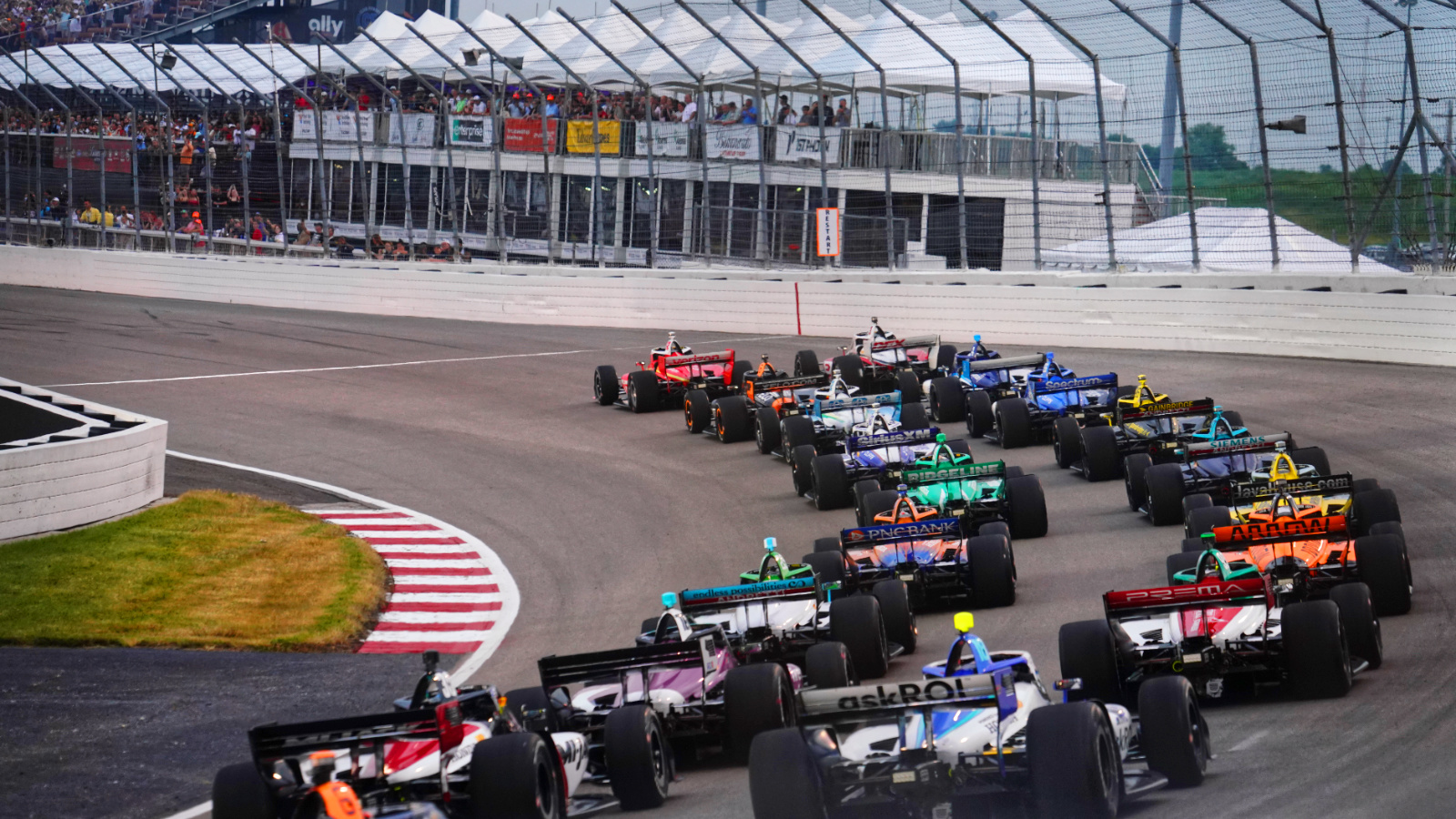The NTT IndyCar Series has released more details about its new engine and chassis formula, which included a confirmation of rumored delays.
The new chassis, which is currently being developed in a collaboration between IndyCar and Dallara, is now set to be introduced in 2028 instead of 2027.
As early as the start of this season, the introduction was referred to as coming in ’27 or ’28. Now that delay has been formalized by the series.
The intention is that the new platform will “feature a look designed to appeal to a new generation of fans while keeping styling cues recognized by all as an IndyCar Series car.”
On-track testing is set to begin in 2026, giving the series plenty of time to come up with solutions to any teething problems before being used in competition.
The current DW12 chassis has been used since 2012, and there have been calls by many in the paddock for an updated car.
“The time has come for a new NTT IndyCar Series chassis,” IndyCar President Doug Boles said.
“The DW12 served the series so well, as it provided a combination of phenomenal, wheel-to-wheel racing and critical enhancements to safety.
“But recent significant updates to the car – from the Aeroscreen to the hybrid power unit – have helped advance the need for a completely new car.
“We are pleased by what our engineers and Dallara have collaboratively designed and believe it will appeal to the fans and paddock while also upholding our standards of safety and enhancing IndyCar’s on-track competition well into the future.”
More than carbon fiber
The new chassis will incorporate many different revisions, bringing over and improving on many areas that have been developed during the time of the DW12.
The Aeroscreen will remain in some form, although it will be integrated into the design from the outset.

The goal is to reduce the overall weight of the new chassis by 85-100 pounds and the gearbox by another 25 pounds.
Weight has been a common complaint from drivers, as added safety components and recently the hybrid power system have added more and more weight to what was once a nimble car.
The low voltage hybrid system will remain, however, with the goal being to continue to increase performance and deployment times with the new generation.
IndyCar also is planning to introduce a 2.4-liter engine at the same time. The larger engine was in development a couple years ago, but was ultimately scrapped and the series continued with the 2.2-liter formula.
Other official partnerships will continue with the new chassis, including PFC which will provide brake system components and Xtrac, which will continue to provide transmissions.
Some team leadership and drivers have already been shown early renders of the new design, though most have been reluctant to make their opinions public due to the provisional nature of the project at this point.








